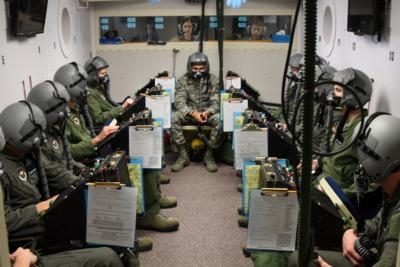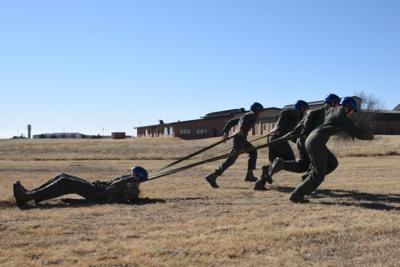Experimental Program Uses Emerging Technology To Create 'Unit-Ready Airmen'
With technology constantly advancing, the Air Force is breaking barriers with the way it trains pilots. The Pilot Training Next program is made up of 15 officers and five enlisted Airmen who have begun an experimental training program designed to use emerging technology combined with a new paradigm for pilot training intended to discover ways to create what is being termed fighter training unit-ready Airmen.

The program is based at the Reserve Center at Austin-Bergstrom International Airport in Austin, Texas. Since Joint Base San Antonio-Randolph isn't set up for aerospace and operational physiology training, the 20 Airmen took a trip to Sheppard Air Force Base to get their initial required guidance.
The first seven days of pilot training are reserved for aerospace and operational physiology training, which trains future pilots how to physically and mentally deal with the unique stressors placed on their bodies in an aerospace environment, including oxygen deprivation. "We didn't scale back our training at all," said Maj. John Lavin, Aerospace and Operational Physiology flight commander. "For pilot training, whether it's a regular class that's 15 months long or the Pilot Training Next that's less than half that time, it's still the first seven days of training."
According to Lavin, flying is very demanding. Flying a four-hour sortie is equivalent to working eight hours on the ground. "It's important to know and understand the environment they will be operating in, whether high altitude or low altitude, crew resource management, acceleration or just even exercise or fitness in relevance to flying," he said. "The more they know before they start their training over on the flight lineside, we give them the foundation in which to operate in that environment."

Enlisted aircrew members usually get an abbreviated two-day course on health hazards while flying, while pilots always get seven days of instruction. "If these officers were all attending (Euro-NATO Joint Jet Pilot Training), they would be doing the exact same thing but without the enlisted participants," Lavin said. "It's definitely cool seeing enlisted in there. We haven't seen flying sergeants since World War II."
For one of the enlisted Airmen, being selected for this course is the chance of a lifetime. "I am pretty excited," said Airman 1st Class Jack Pepper. "I'm originally an airborne cryptologic analyst, which I was happy about, but this is an unbelievable opportunity."
Pepper, who went through the enlisted aircrew course, notes the differences in the training. "I've been a lot more engaged because it feels more real," he said. "The previous course I took it was like, 'Okay, I might have to know this in the next couple years,' but with this course it's like, 'I'm going to be actually flying a plane within the next couple of months.'"
With aerospace and operational physiology training complete, the 20 Airmen are scheduled to head back down to Austin to continue Pilot Training Next.
(Images provided with USAF news release)
 ANN's Daily Aero-Term (05.02.24): Touchdown Zone Lighting
ANN's Daily Aero-Term (05.02.24): Touchdown Zone Lighting Aero-News: Quote of the Day (05.02.24)
Aero-News: Quote of the Day (05.02.24) Aero-News: Quote of the Day (05.03.24)
Aero-News: Quote of the Day (05.03.24) ANN's Daily Aero-Term (05.03.24): UAS Traffic Management (UTM)
ANN's Daily Aero-Term (05.03.24): UAS Traffic Management (UTM) ANN's Daily Aero-Linx (05.03.24)
ANN's Daily Aero-Linx (05.03.24)




